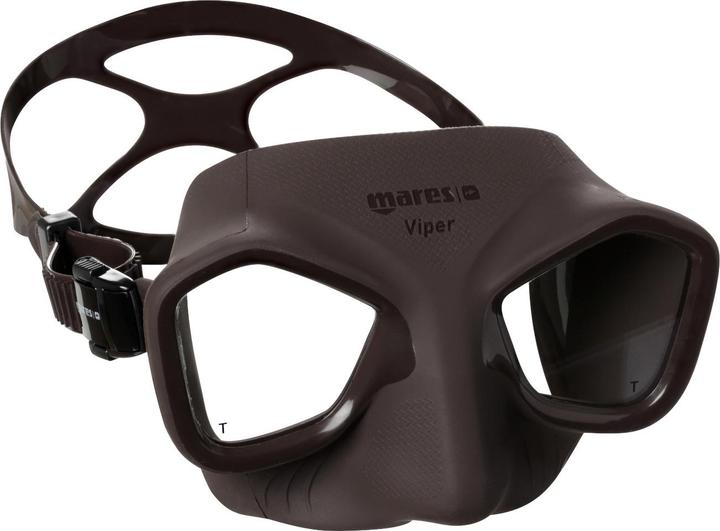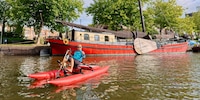

Apnoea diving: Take a deep breath and float relaxed through the underwater world
Diving into the blue expanse of the sea with a deep breath - that is a dream of many divers. Doris Hovermann has realised it. As a former member of the German national apnoea squad, she has set records and learnt a lot about herself and the underwater world in the process.
When Doris Hovermann scrolls through the photos on her smartphone, it's like a trip to another world. I look over her shoulder at the international water sports trade fair "Boot" in Düsseldorf. Sometimes she dives with sharks in the Azores, sometimes in cave systems, known as cenotes, in Mexico. She floats underwater without air tanks, regulators or other equipment.
Doris is a freediver and manages to dive more than 50 metres into a lake in one breath and without any aids. The distance travelled is roughly equivalent to the height of a 14-storey building.
If you're not already impressed, freediving in a lake is a discipline in its own right, as the conditions in the lake are much tougher than in the sea. Visibility is usually poor due to silt. It is dark and cold. Venturing to a depth of 50 metres in these conditions without breathing apparatus requires a great deal of diving skill, mental strength and courage.
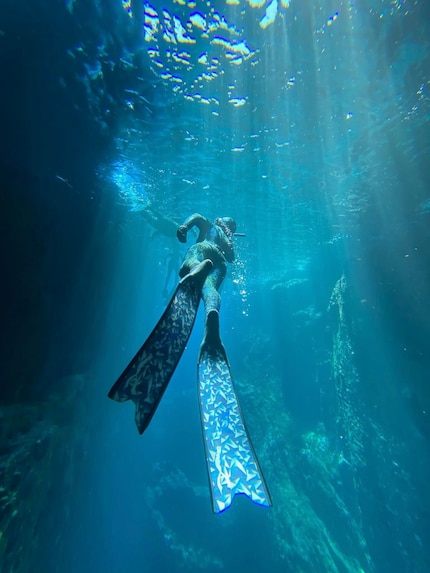
Source: Doris Hovermann
A fun competition awakened the passion
Doris' journey into the depths without equipment and air tanks began almost by chance 15 years ago. She had already been working as a scuba diving instructor for years when, at the opening of a diving tower in Siegburg, Germany, she saw freedivers descending to a depth of 20 metres and releasing air bubbles shaped like rings for fun. They slowly floated back to the surface and emerged with a smile. The apnoea divers called their fun competition "Lord of the Rings".
In contrast to the carefree freedivers, the scuba divers, of whom she was one, seemed heavy and rather tense to Doris. So she tried to explore the diving tower with only one breath in her lungs.
As soon as she sank into the depths without a compressed air cylinder and regulator, she was gripped by passion. She wanted to find out more about this sport and how to float elegantly underwater. That same day, she contacted a freediving instructor. And learnt that, as with scuba diving, apnoea diving also has a structured training course with different levels and learning content that builds on each other. After a whole series of courses and plenty of experience, she became a freediving instructor herself and eventually a professional trainer for instructors.
An excursion into competitive sports
Soon the diving tower with its 20 metres was no longer deep enough for her and Doris ventured into greater vertical distances in lakes and oceans together with other diving enthusiasts. "It's amazing how quickly you can improve with good instruction, breathing technique and a bit of training," she says. She soon qualified for the national team. She took part in a total of three world championships in various disciplines, from distance diving to deep diving with fins (constant weight). In 2014, she set the German record for deep diving with fins in the lake for the second time with 47 metres, which has only been beaten twice before. With the German team, she achieved seventh place in Nice in 2012 in a competition in which the overall performance across all disciplines counts.
"Just diving in and seeing how far you get is not possible.""
What particularly appealed to Doris about the competitions was the mental preparation. In competitions, participants have to specify the depth they want to dive to beforehand. And dive to the exact second at the start signal. A bottom plate is placed at the previously specified depth. It is not possible to sink any deeper because of this plate. Anyone who does not reach the depth is penalised with a point deduction. Greater depths bring a higher score. "So you have to know yourself very well and know what you can do on the day of the competition and under competition conditions," she says. "It's not possible to just dive in and see how far you can go." This is also the reason why the depths achieved in competition are often lower than those achieved in training.
You can get an impression of how a freediving competition works in this video:
Doris won her first gold medal at a championship in Lake Zurich in 2012. She has since retired from competitive diving and now gives diving courses and organises diving trips all over the world. She also supports the European Space Agency (ESA) in the underwater training of astronauts. After all, the hostile environments of space and water depths have a lot in common for humans.
The journey into the self
Free diving has now become so professionalised that a great deal of training is required to keep up with the top athletes. For Doris, this is no longer interesting and is also not realistic alongside her everyday life as a diving instructor and brand ambassador for Mares. Instead of setting records, she prefers to focus on the underwater experience. This includes the journey into the depths, but also into her own self.
Because it is the interplay between deep relaxation and crystal-clear awareness that enables people like Doris to stay underwater for several minutes with just one breath. For safe and relaxed diving, it is important to lower the heart rate before diving and to calm down so that oxygen consumption is as low as possible. This has a meditative quality and is what makes freediving so appealing for many people.
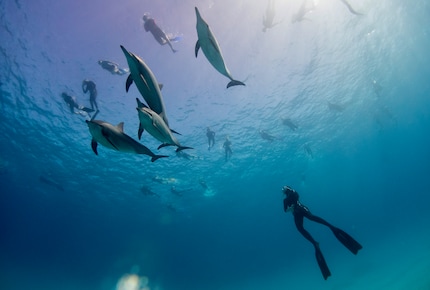
Source: Doris Hovermann
This is not about depth records at all, but about gliding relaxed along a reef at a depth of ten metres, for example. The calm and relaxed way in which apnoea divers move underwater has other advantages too: Fish don't swim away so quickly, but are curious and come closer. "I've had some wonderful encounters with marine mammals," enthuses Doris. "Maybe they didn't see me as a foreign body and that's why they interacted with me." In her photos, she also shows me fascinating encounters with sharks in open water.
Tips for anyone interested in the sport
While many people are attracted to freediving - not least because of the Luc Besson film "The Big Blue" and the Netflix production "The Deepest Breath" - others are put off by the dangers. Freediving does indeed harbour risks and is considered an extreme sport. "It's very important that you don't go alone," advises Doris. "With a good diving instructor, you can learn a lot about physiology and the right breathing technique in just a two-day course." Calm and relaxed breathing is immensely important, as hyperventilation, i.e. breathing too quickly, is dangerous and can lead to a blackout underwater.
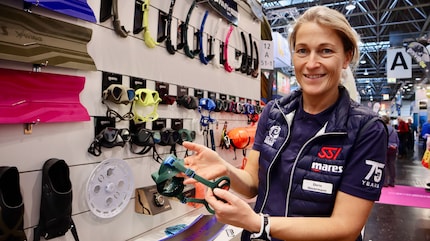
Source: Siri Schubert
Another aspect is important for Doris: never dive alone. Even very experienced divers can lose consciousness underwater without any prior signs. With a diving partner nearby, the unconscious person can be brought to the surface and usually regains consciousness quickly. Without a buddy, there is a risk of drowning. "I dive five to six times a week and never go alone," says Doris. After all, there is always a residual risk, even for experienced divers, even in the swimming pool.
You don't need to be incredibly athletic to get started, but you should have a certain basic level of fitness. You need less equipment than for scuba diving. A mask, snorkel, wetsuit, weight belt and special freediving fins are all you need to get started. Most courses also allow you to hire certain pieces of equipment such as fins. If you already know what you need, you will find a large selection of diving equipment from neoprene to masks, snorkels and fins in our range.
If you want to find out more about freediving, these books will give you good insights:
More important than the equipment at the beginning is the desire to embark on a relaxed underwater adventure. Preferably under supervision and never alone.
Research diver, outdoor guide and SUP instructor – I love being in, on and around water. Lakes, rivers and the ocean are my playgrounds. For a change of perspective, I look at the world from above while trail running or flying drones.
Interesting facts about products, behind-the-scenes looks at manufacturers and deep-dives on interesting people.
Show all